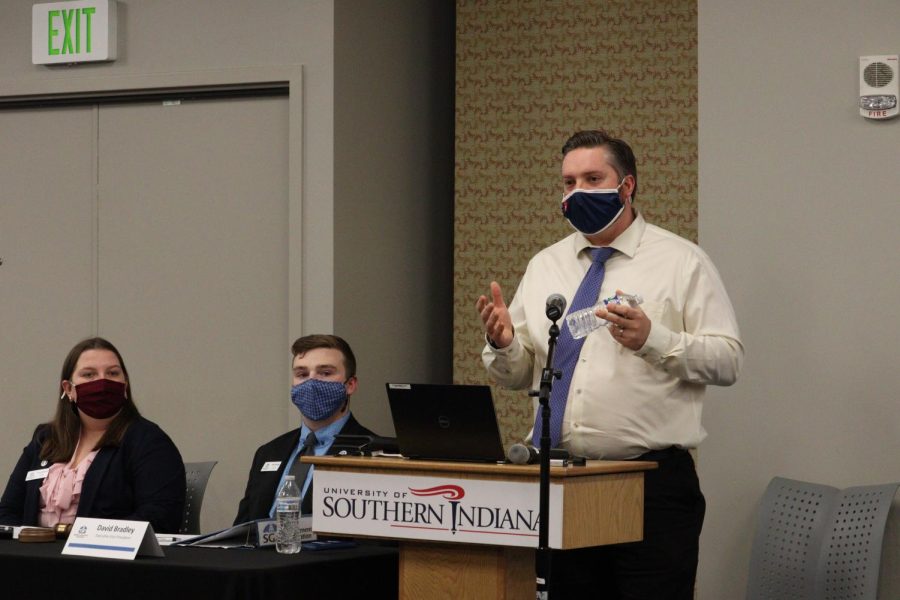A look into the Division I Exploratory Committee
Nicholas LaRowe, co-chair of the Division I Exploratory Committee, speaks about the DI Exploratory Committee at a Public Forum hosted by the Student Government Association Dec. 2, 2021.
February 6, 2022
President Ronald Rochon formed the Division I Exploratory Committee on Oct. 8, 2021, to investigate if the switch from Division I to Division II would be feasible.
The Division I Exploratory Committee released their final report Jan. 13.
The committee was composed of 25 members, consisting of university faculty, staff, students and alumni. Each person’s role was unique as members came from various university departments to understand the university’s current athletic structure and what the possible transition would entail.
Nicholas LaRowe, University Athletics Council chair, and Jon Mark Hall, university athletic director, co-chaired the DI Exploratory Committee.
“I was enjoying meeting colleagues from across campus who I wouldn’t meet or talk to ordinarily,” LaRowe said. “Meeting some really cool people and getting to learn what they’re up to and work with them.”
“It was great to see so many other students on this committee,” said Anna Ardelean, Student Government Association president. Ardelean was a committee member alongside four other students.
Ardelean said the entire committee “connected” in their love for the university. She said, “We had lots of debates, but no one was hateful. No one was rude. No one felt pressured.”
The committee members branched into subcommittees to research and develop narratives evaluating the university’s readiness of 26 components based on an NCAA planning checklist.
The 26 items were scored on a scale from one to three: one being ready to make the transition now, two being ready to make the transition to Division I with minor adjustments and three being more than minor adjustments needed to make the transition to Division I.
Zane Mitchell, dean of the Pott College of Science, Engineering and Education and engineering professor, said, “It was a kind of divide and conquer type committee because there’s so many things to look at.”
Mitchell was part of the academic affairs committee, which he said looked at academic support for student athletes.
Kindra Strupp, vice president for marketing and communications, led a marketing-oriented subcommittee that evaluated media coverage, university support and fundraising plans specific to basketball and football. Strupp said, “Of course, we are not pursuing football.”
“The work the Exploratory Committee did collectively will provide a solid foundation for the work that needs to be done to satisfy the NCAA’s strategic planning requirements for reclassification consideration,” Strupp said.
The Board of Trustees will make their final vote on Monday determining whether the university will make the transition to a Division I athletics department or remain Division II.
“Should the Board of Trustees decide we should proceed,” Strupp said, “Division I is a unique reputational opportunity to move beyond what we have been to what we will become—DARING competitors—in every sense of the word, academically, athletically and as a university.”
“I’m very supportive either way we go,” Mitchell said. “We have some awesome Division II programs…but it would be neat to see what we could do in Division I as well. I think folks are hopefully excited to see what the decision is gonna be.”






![“[title of show]” is USI’s first summer musical.](https://usishield.com/wp-content/uploads/2025/07/Title-of-Show-Cover-300x208.png)